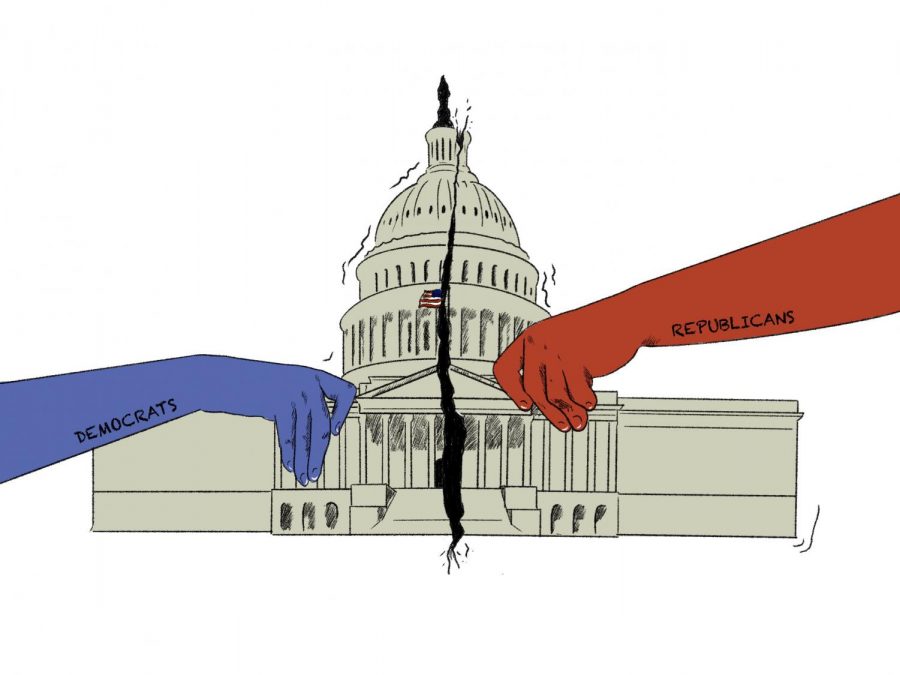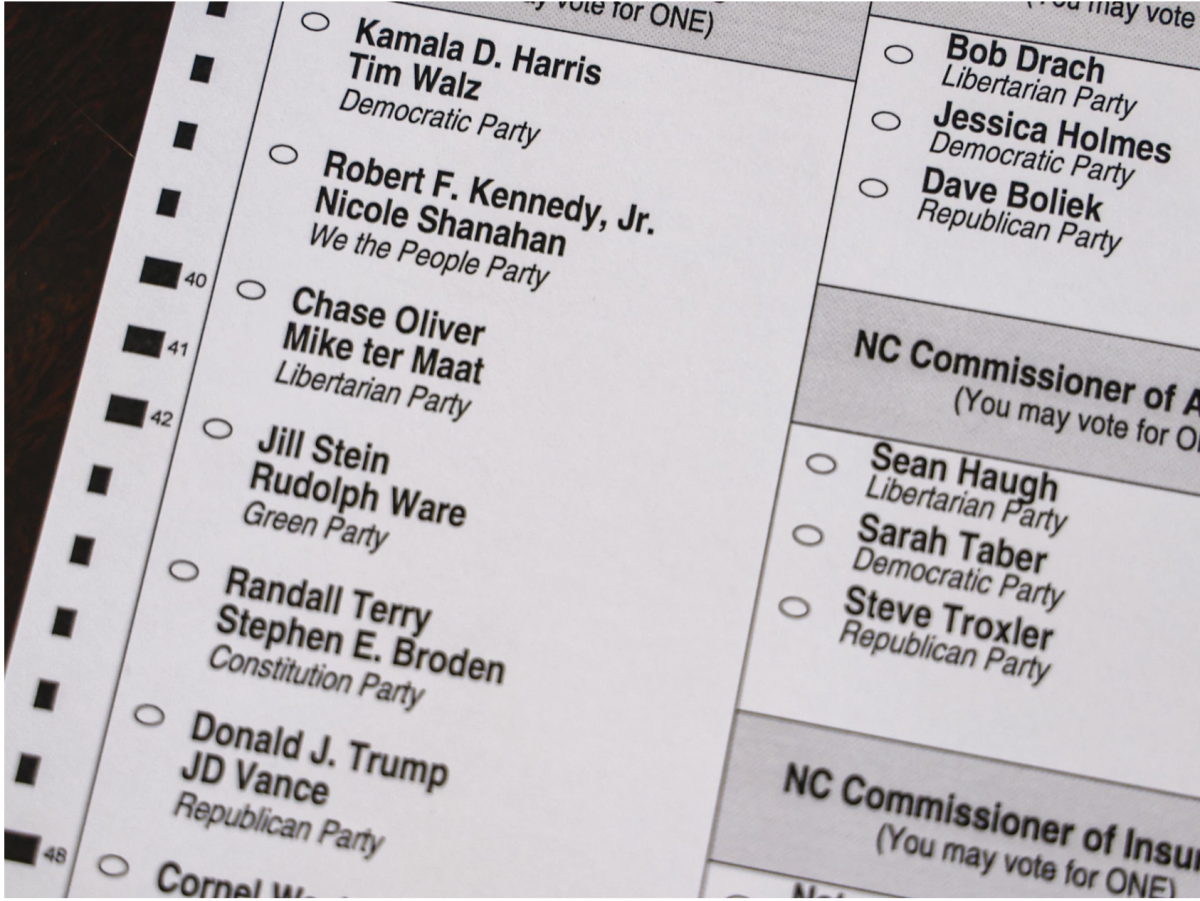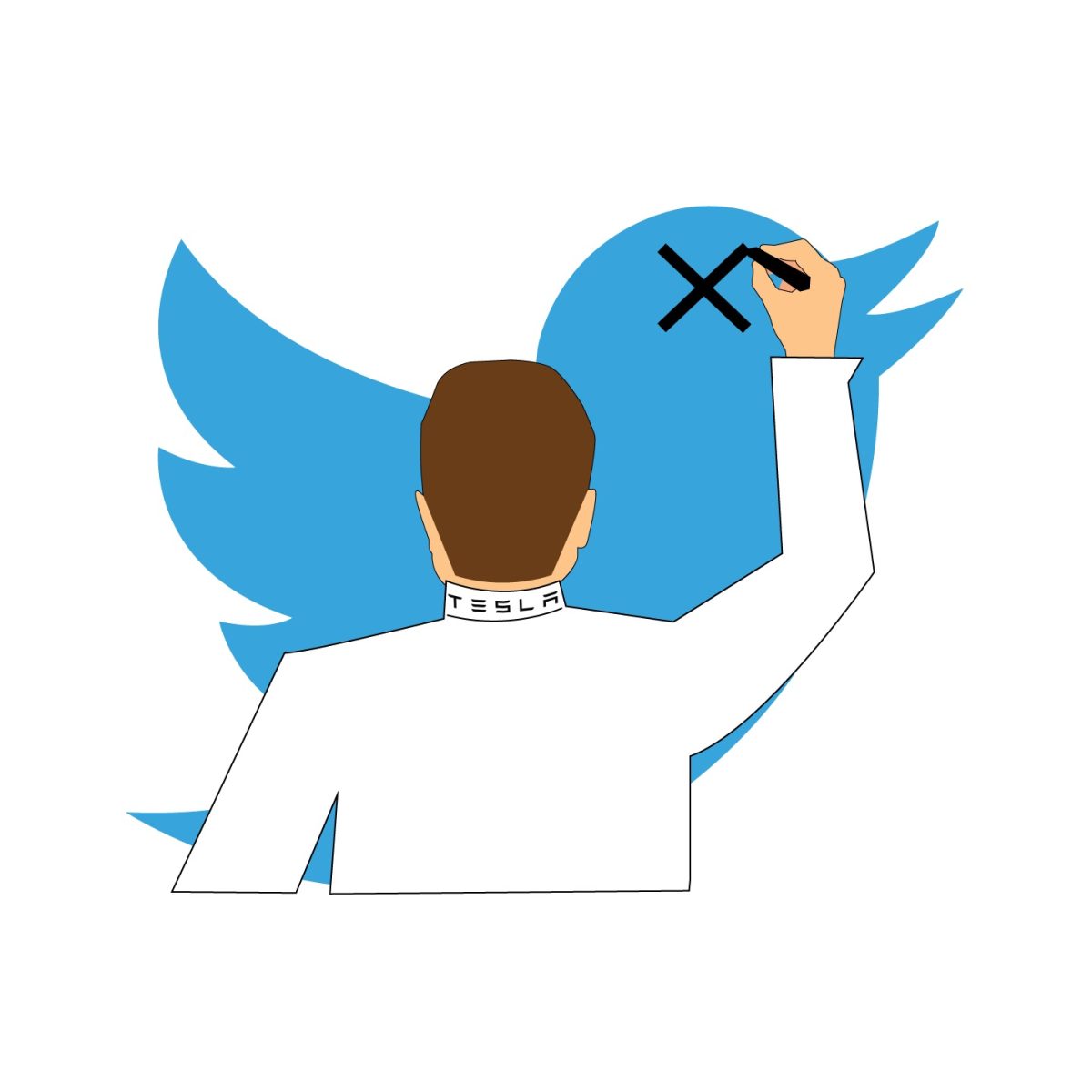Tensions within the country remain heightened between the radicalized masses of the democratic and republican parties after “The Trump Insurrection,” coined by CNN, on Jan. 6. The blemish on American history was just the pinnacle of a long-running feud between parties fostered by social media, a rampant pandemic lasting over time, and conflicting ideologies that fight to be the prevailing face of the nation.
The beginning of our divided public can be traced back to over a decade ago. The United States has felt the impact of a divided nation ever since the presidency of Barack Obama from 2008 to 2016. Critics like Elaine Kamarck argue Obama’s legacy can be summed up by his single major legislative achievement, Obamacare, and his less than successful attempt at building his party.
Many believe it was Obama’s response to the Great Recession that gave President Trump a way in the Oval Office. He had a choice between a large stimulus package developed by Christina Romer or a smaller more refined stimulus advised by Lawrence Summers. He decided on Summers’ plan that promised a slow and stable recovery that would not be perceived in Obama’s favor for years to come.
According to the Pew Research Center, in 2015, seven-out-of-ten Americans said the government’s policies did little to nothing to help the middle class most affected by the 2008 recession. The economy was a driving argument to decide the winner of the election in 2016 and President Trump’s most boasted promise was that he would fix it.
In addition, Obama’s attempt at slowing climate change was denied legislatively and prompted him to enact several executive decisions from creating a Council on Climate Preparedness and Resilience to the Paris Climate Agreement. His original cap-and-trade bill for the global threat was met half-heartedly, as he barely made any attempt to court the democratic party to see eye-to-eye. All being executive actions, they were easily revoked by President Trump, who said the scientific phenomenon “global warming” is a “hoax” and the policies harm American businesses and the economy along with them. According to the Pew Research Center, President Obama’s approval rating was 88% among Democrats and 14% among Republicans. This was the largest divide between partisan voters within the last 60 years.
For the goal of unifying the country, it would have been in President Obama’s best interest to seek the approval of at least his own party before taking the issue into his own hands. By failing to do so, he furthered confusion amongst the Democratic Party and created a divide between people who thought he was doing the right thing and people who thought deliberation was necessary before the government took action.
The election of President Trump in 2016 was amidst the two most hated candidates in the past 30 years of American history, according to a USA Today poll. In a hodgepodge of less than respectful campaigning and debating, the mishandling of government emails by Secretary Hillary Clinton proved to be a more damaging aspect to claim presidency than Donald Trump’s womanizing and egregious composure brought forth by the infamous “locker room talk” video. The democratic loss was an especially large hit to feminists as President Trump was elected despite the video’s debut. The tension of Trump’s appraisal for boasting sexual assault as a gift of being famous snowballed into the #MeToo Movement just a year later in 2017. According to Orlon Rummler from Axios, as a result of women speaking up about their experiences with sexual assault at least 201 powerful men have lost their job or major position, including influential figures such as Bill Cosby and Harvey Weinstein. The movement created unity amongst feminists and allies to bring individuals who got away with sexual assault to justice.
However, it also demonstrated to the public that social media can be used by anyone to damage the reputation of a public figure if public opinion could be swayed far enough. An evolution of this idea within social media created the controversial “cancel culture” that tarnished the reputations of many public figures since 2019. The social media trend has forced public figures and influencers to answer for their words from the past and sometimes caused companies they are involved with to cut ties.
According to a Politico poll in 2020, “27% of voters said cancel culture had a somewhat positive or very positive impact on society, but almost half (49%) said it had a somewhat negative or very negative impact.” The controversial trend sparked strong opinions on social media as liberals demonized celebrity personalities of the past and conservatives gaslighted the accusers through name-calling. It was a trend that gave younger generations a power trip with their newfound influence on society and older generations an opportunity to degrade the value of their opinions.
Similarly, the Black Lives Matter movement and protests of 2020 were found with bipartisan uproar from opinionated conservatives rebutting “all lives matter” and fired up liberals claiming “all cops are bastards.” According to the New York Times, the movement may have been the largest in US history spanning 550 places in the country and bringing out more than 4,700 demonstrations since the start of the protests on May 26. The tragedies of George Floyd, Breonna Taylor, and countless other names wrongly killed, abused, or convicted by police brought those who were sick of the racism to the streets. In response, some conservatives chanted the phrase “all lives matter” that hid the Black in the back and argued police brutality is experienced by more than just Black people. According to Kevin Liptak and Kevin Holmes, “Trump was calling the words ‘Black Lives Matter’ a ‘symbol of hate’ — a description he’s refused to use for Confederate emblems — that would spoil the ‘luxury avenue’ he once called home.”
President Trump drew a line in the sand and pinned the Republican party and his National Guard against civil rights activists, further solidifying the divided state of the country. Republicans gaslit the opposition by stating “me too,” while the democrats pointed their fingers at the entire institution of police instead of focusing on the immediate threat of cops that do not receive the penance they deserve.
Despite the controversy of whether it happens to others, the injustice of the police officers should not have been a political issue. The unjust killing of citizens by their own law and order should have been met with a unified front of republicans and democrats together.
The division in this country has been aided, abetted, and frankly adored by common individuals and powerful elites alike. The Trump Insurrection was the latest of the divisive demonstrations, yet has proven to be the breaking point for many republicans loyal to Trump and their party, as reported by Molly Ball for Time. It could be treated as a necessary tipping point in order to move forward from a tainted legacy of citizens fighting against each other.
Tolerance and acceptance must be the defining characteristics of our society for years to come if the change is to be positive. The feminist idea that all people should be treated equally must be universally accepted, but with civil discussion on what equality means in government. The law that all people are innocent until proven guilty should be properly instilled in the training of police officers.
These ideas can be established within our government and way of life without completely uprooting our most valued institutions and traditions. Both sides of the political spectrum have caused division within the country, but it is up to the whole country to correct it.
Nicholas Ebadat is a sophomore studying journalism and film. Follow him on Twitter @NEbadat.













